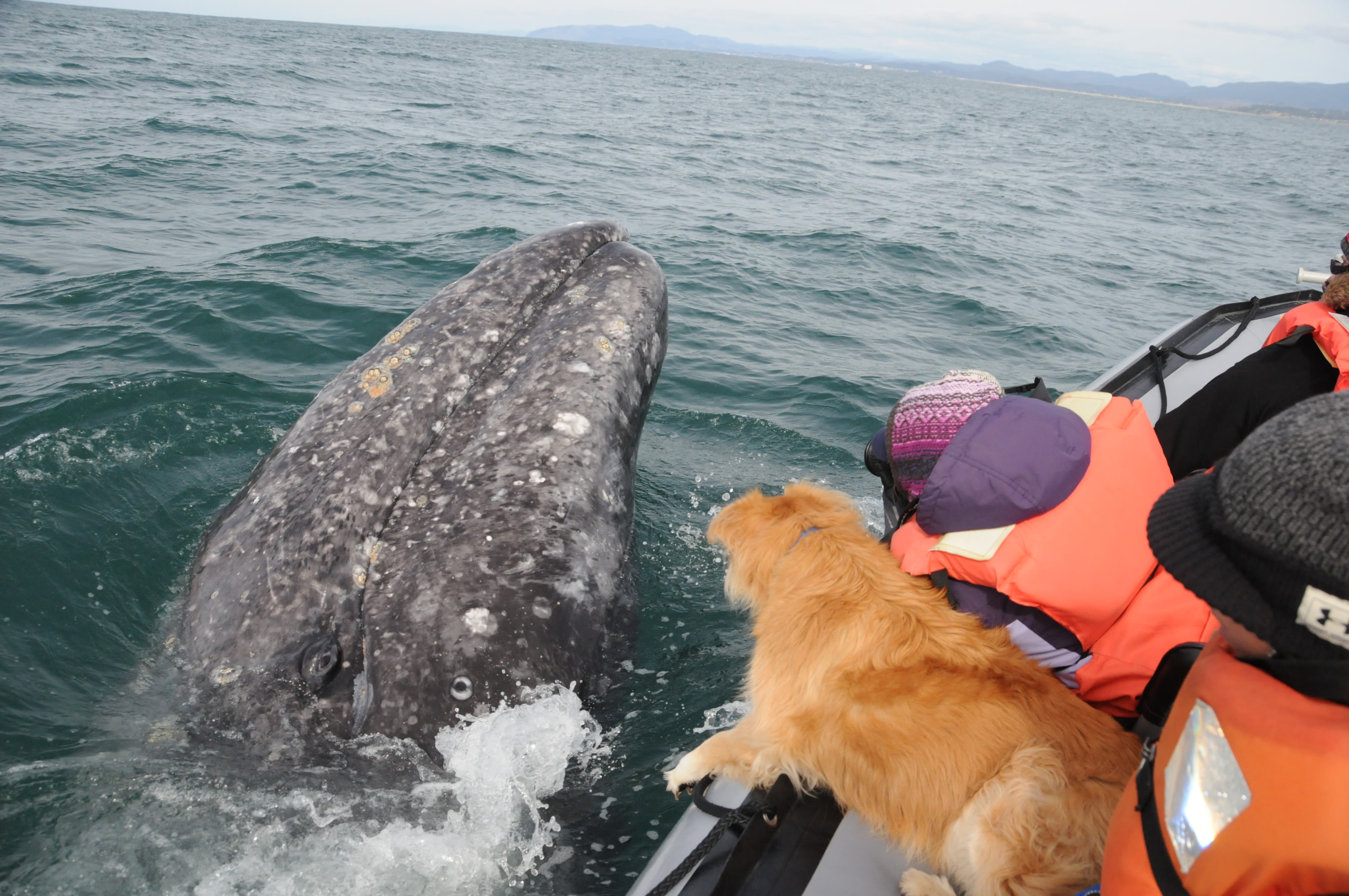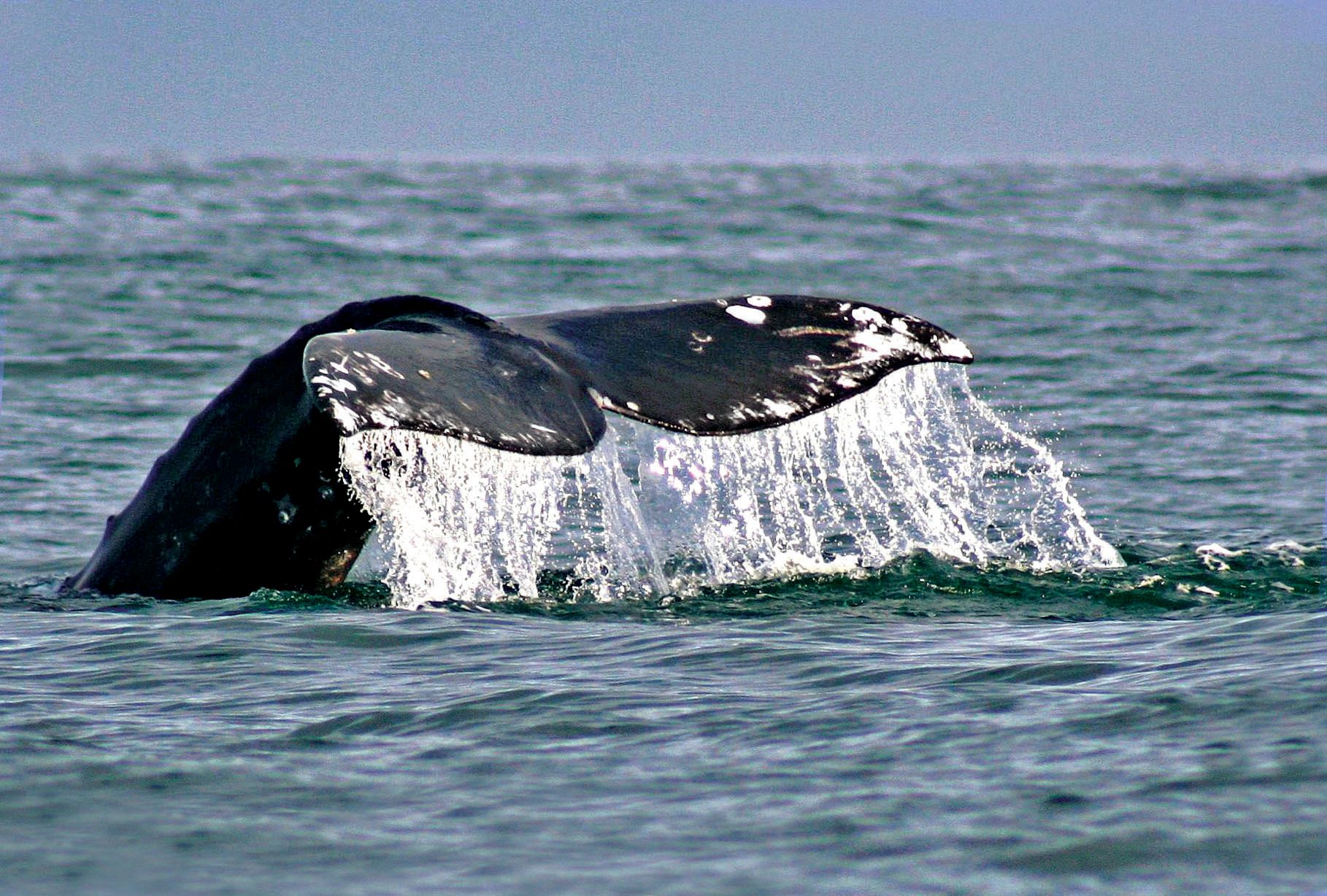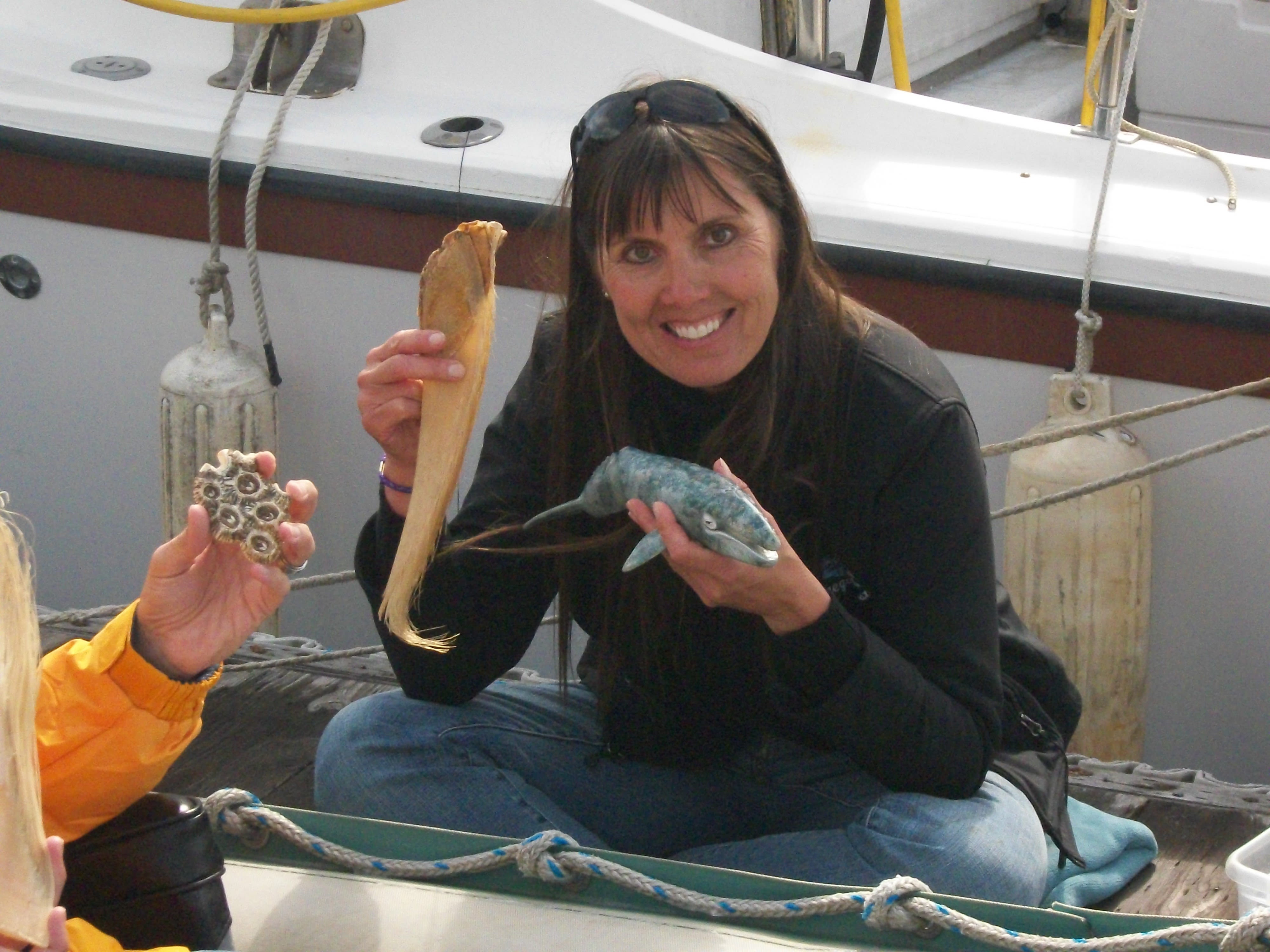Meet the Resident Gray Whales of Depoe Bay
Carrie Newell—marine biologist, professor, and sometime Cousteau crew member—has spent the last 17 years of her life getting acquainted with the resident whales that summer in Depoe Bay, Oregon. “They’re characters,” she laughs. "I literally could do soap operas about some of these stories.”
Along with the help of Kida, her four-legged first mate, Newell offers whale watching tours to the public between her own research excursions. Crowds gather the thickest in December and March during whale watching weeks to observe the migration of 20,000 gray whales from Mexico’s breeding waters to the feeding grounds of Alaska and back again. However, Newell says about 200 whales opt out of the last leg of the journey north—inhabiting instead the shoreline between northern California and southern British Columbia. That means you can spot a whale for just about 11 months out of the year in food-rich places like Depoe Bay. Go for a tour with Newell, and you just might get to know a few of the regulars—who she says usually start showing up in late May—on a first-name basis.
First up is Scarback, whom Newell calls Depoe Bay’s most famous whale. Scarback earned her name after surviving an attack from an exploding harpoon back in the mid-’80s. “She’s an old female, at least in her late 40s,” says Newell (most gray whales live to be 40–60 years old), “and we call her a cougar because she has young males chasing her!” The video below captures Scarback quite close to the boat—skip to the 0:35 mark to get straight to the action.
Comet, another female resident, is easily identified thanks to an obstruction in her blowhole that sends water rolling up in bubbles while she’s underwater. By the end of recent summers, Comet has become quite friendly with Newell, often swimming right up to her boat during whale watching trip.
So what does friendly look like for a gray whale? “They’re not very vocal,” explains Newell, “but they’ll look right at you and make eye contact. They’re curious about us, and they like to check us out as much as we like checking them out.” With an eyeball socket the size of a grapefruit, that searching look must be deeply felt.
Carrie speaks fondly of Scarback and Comet, but her favorite resident whale is currently a 22-year-old male known as Eagle Eye. Though he can be identified by a pattern on his left dorsal hump resembling an eye, Eagle Eye is also distinguished by his behavior. “He’s a very … promiscuous whale,” hedges Newell. Though gray whales can only get pregnant in the depths of winter, Eagle Eye apparently spent last July through September practicing. “He’ll go and chase [females] for hours—right on their tail—and rub them with his flippers. Sometimes you see the Pink Floyd—that’s the male appendage, six feet long, and hot pink.” Newell has since received reports from California confirming that Eagle Eye’s antics remained the same as he journeyed southward.
While these three whales return every summer, Newell says up to 53 more have made repeat appearances, and Newell is there to observe them year-round between the marine biology classes she teaches at Lane Community College in Eugene. A published author with four degrees—and one who's made a television appearance with Jacques Cousteau’s son Jean-Michel—it’s no wonder the citizens of Depoe Bay refer to Newell as the local expert.
While getting to know the resident whales personally, Newell has been struck by their obvious intelligence. Unlike what we know of other animals on the planet, whales demonstrate self-awareness—meaning if you place a mirror in front of a whale, they are able to identify themselves. And while on a trip to Mexico to visit the lagoons where mothers give birth, Newell, a grandmother of four, found herself experiencing something all-too-familiar: babysitting. “The females literally pushed their calves up to our boat, and they’re like, ‘interact with my calf!’ This is a brand new baby gray whale, maybe at the most a month old, and it played with us while mom was hanging back. The female gray whales are very smart and were using us as human babysitters.”
So how can we do our part to protect these intelligent creatures? Says Newell: “Don’t drink from plastic water bottles, don’t release balloons—they get to a certain altitude and pop, and ocean critters swallow them and die—and don’t use plastic bags. Those are the big three.” In addition to her research, Newell uses her whale tours to illustrate the interconnectedness of nature. “I’ve had people tell me different times that they’re having the best day of their whole lives. People cry, they laugh, they holler—it’s the whole range of emotions, seeing this very large mysterious creature, sometimes popping up feet from the boat.”
If you’d like to exchange grapefruit-sized glances with one of Carrie’s resident whale friends, visit her website and give her a call to schedule a trip (early the morning-of, or the day before), and be sure to visit her Whale Museum, open on the weekends and featuring more info on resident whales as well as sharks and other sea life.




